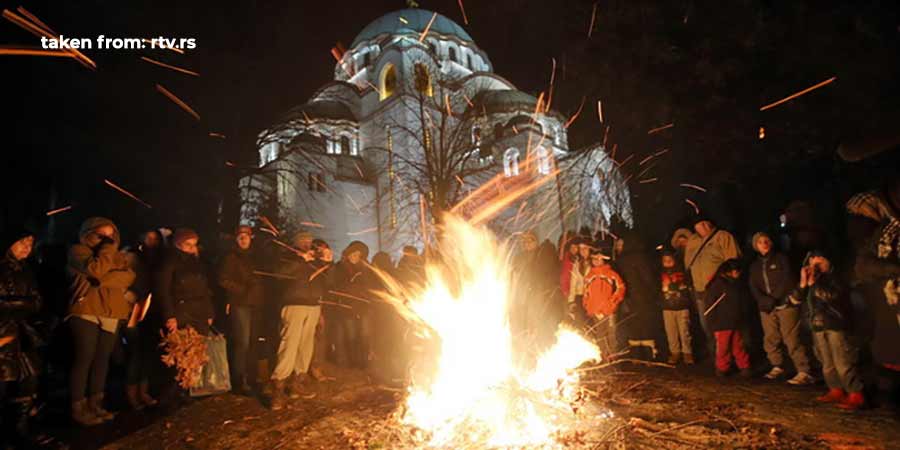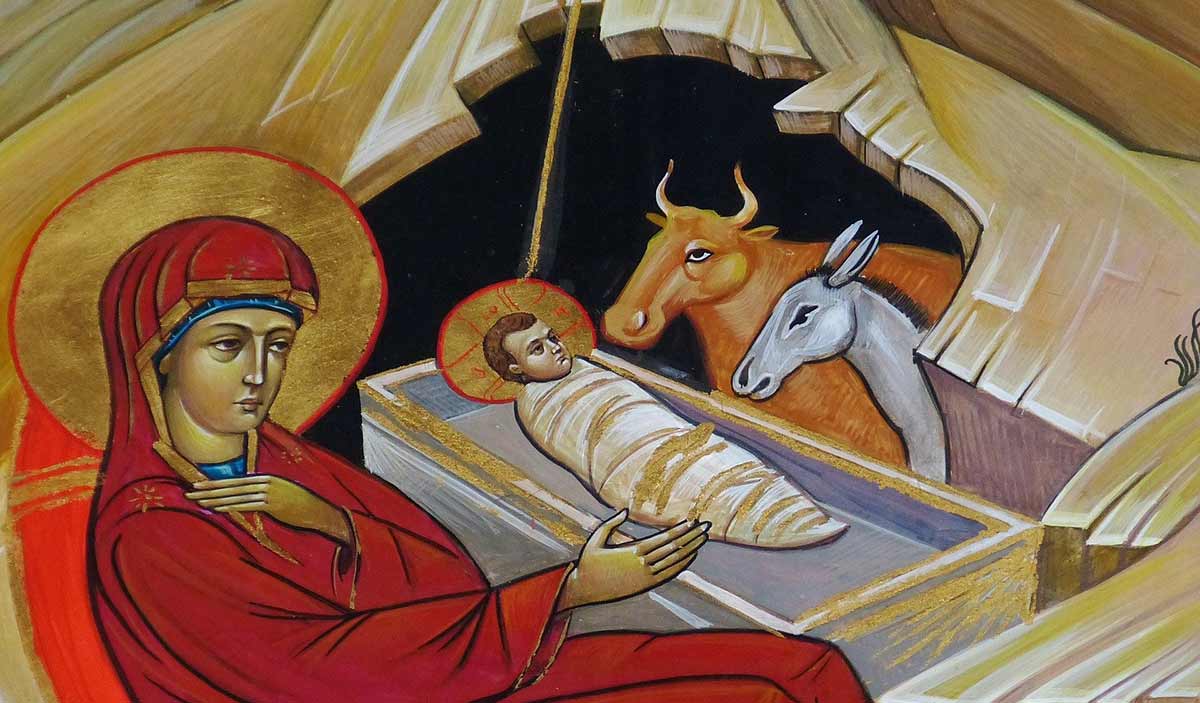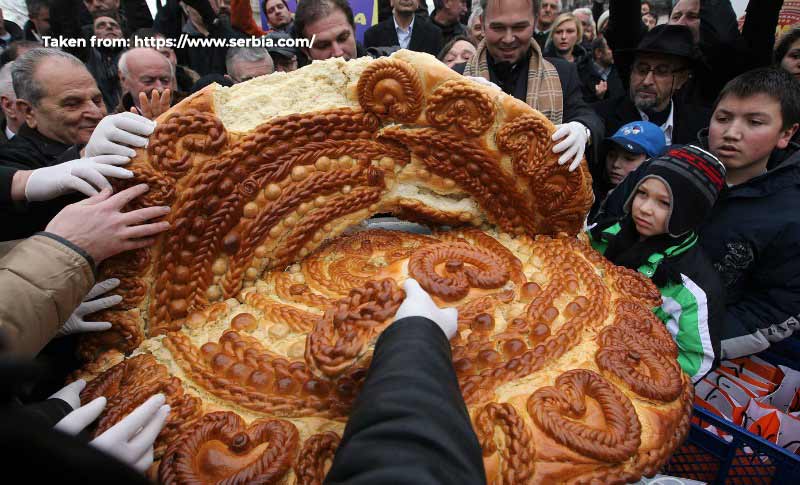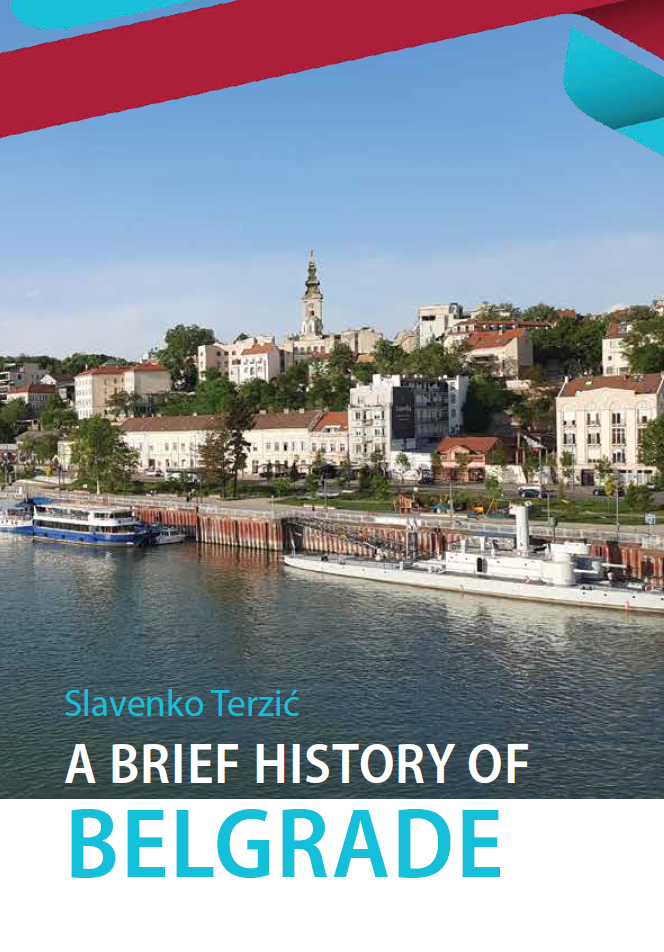Orthodox Christmas
Christmas is often called the happiest Christian holiday. Christmas is believed to bring joy, love, and harmony. It is a holy day that celebrates family and family values, and is preceded by a series of customs that begin 3 weeks before.
Ortodox Christmas and the customs that accompany it
It all starts with "Detinjci" (literal translation Kids) 3 weeks before Christmas. It is a custom for parents to „tie their children“ with a rope, and those who were good and thrifty bought gifts for parents from whom they "buy their freedom". With this symbolic custom from the earliest days, children learn to respect their parents and obligations. Tying symbolically represents family bonds. Next week, "Materice" holiday („Mothers“) is waiting for us, that is, a holiday when the mother should "symbolically" get rid of the tie, by giving gifts to her children. One week before Christmas, "Oci" (or "Fathers") follows, a holiday when fathers "free themselves" from the ties by offering gifts to their children.
The day before Christmas is called Badnji Day. It was named after "Christmas Eve", a young oak tree that is symbolically brought into the house before Christmas. Tradition dictates that the oldest and youngest male person in the family go to the forest early in the morning, in order to cut the branch that they will bring into the house together with the straw. In some areas, if there is no oak, then fir or pine wood is used. On Badnje veče (eve before Christmass), cutting the Christmas tree does not end the obligations of the host. It is customary for the host to prepare a "pečenica (pechenitsa)" (roast pork or some better part such as a thigh and ribs) which is brought into the house together with a Christmas tree and straw, symbolizing the place where Jesus was born. During that time, the housewife prepares food and cookies for the Christmas lunch. Special attention is paid to the preparation of the Christmas bread („Česnica“), in which, according to the customs, coins, and drains are inserted. It is believed that people who find a coin will bring prosperity, and a person who finds a drain will follow good health in the coming year.

How is Christmas tree cut?
In the early dawn after sunrise on Christmas Day, the host goes to the forest with his sons or grandsons to cut Christmas trees. Customs say that one should find a young and straight oak or cerries. The Christmas tree should be big enough, but also the size that host can carry home on his shoulder. When the appropriate tree is found, the host turns to the east, crosses himself and prays to God and to the birth of Christ, takes an ax and cuts the Christmas tree from the east side. When the Christmas tree is brought home, it stands up next to the front door until the evening when it is crushed and brought into the house.
What does Christmas tree symbolize?
Christmas Tree symbolically represents a tree, which the righteous Joseph pledged into a cold cave, where Christ was born. Christmas tree also means the tree of the Cross of Christ. In every Serbian family, the Orthodox Christmas is celebrated with a Christmas tree. During the night, the tree is burned in the same way as righteous Joseph did. In other Christian and Orthodox countries, instead of oak or cerris, a fir tree is brought into the house. The question that naturally arises is how this difference happened? We can look for the reasons the fact that in the recent past, the Christmas tree (fir tree) was rare and expensive, and could not be found in all areas, as well as a tree that is not so suitable for burning.
Christmas Eve connects Christmas Day and Christmas. When it gets dark, the host together with his sons or grandsons, brings pechenitsa, Christmas tree, and straw into the house. First, the Christmas tree is brought in, and after the Christmas tree, the straw is sprinkled all over the house. Customs dictate that the housewife pour sweets into the straw under the table where Christmas lunch is eaten, which the children will collect in the morning while „peeping“ („Peep, peep sound of little chickens“). Thus, each house is symbolically decorated to look like a cave with a manger where Christ was born.

Photo from: rtv.rs
Dinner before the Orthodox Christmas
After the pechenitsa, Christmas tree, and the straw are brought inside the house a family prayer follows. After the prayer, a family greets the Christmas and sits down at a table. Dinner before Christmas is necessarily fasting, and usually, prebranac (specially prepared beans), fresh or dried fish, and dried fruit are prepared.
Christmas - The happiest holiday among all holidays
Christmas is celebrated for three days. The first day of Christmas is celebrated on January 7 according to the old, ie December 25 according to the new Julian calendar. In all Orthodox churches on the eve of Christmas before dawn, all the bells ring, Rifles echo announces the arrival of Christmas and Christmas celebrations. The solemnly dressed host takes the family to the Church for the morning and Christmas liturgy. After the service, a plate is received, which is eaten before serving. Housemates, friends and passers-by greet each other with "Christ is born!", And according to the custom, they should greet with "Truly he is born!". That is how one should greet until the Epiphany.

Položajnik (literal translation the layman)
When the host returns from the church, he greets everyone in the house with a Christmas greeting, kissing each other and congratulating follows. There is a very beautiful custom - at dawn just before Christmas, a special guest "Položajnik" comes to the house. It is usually a child from the neighborhood who has previously agreed with the host. Položajnik greets everyone with a Christmas greeting, and comes next to the stove. He opens the door on the stove or stove, and heats the fire, saying a toast: "How many sparks, so many fortunes, How many sparks, so many coins (money). How many sparks are in the sheepfold, How many sparks are so many piglets and lambs, How many sparks, so many geese and chickens, and the most health and joy, Amen, God forbid ". The position symbolically represents those Sages who knew how to interpret the meaning of the star that appeared in the East at the time of Christ's birth. Symbolically, he is associated with sages (despite his age) because he knows how to light a fire and interprets the meaning of the sparks coming out. For good news and toasts, the hostess gives him a specially prepared gift.
Orthodox Christmas and Christmas bread
On Christmas Eve or early in the morning on Christmas, the housewife kneads a special cake which is also called „Česnica“. A coin is placed in it - gold, silver, or ordinary, and it is pierced from above with a Christmas tree branch, and „Česnica“ has the role of a celebration cake on Christmas. In some areas, a dogwood is placed on the cake, which symbolizes health. When Česnica is baked, it is brought to the place where the Christmas lunch is served. The host cuts a piece of pechenitsa for Christmas lunch (usually the left shoulder, head, and part of the ribs). When everyone stands at the table, the host lights a candle incenses icons, and everyone present. He then hands the candle to a younger person to cense the rest of the house. If no one knows how to sing the Christmas Troparion, then "Our Father" is recited aloud.

When the prayer is over, the cake is broken into as many parts as there are family members, while one piece is intended for a random guest "intentional traveler". According to popular belief, a person who received a part of a cake (Česnica) with hidden coins is accompanied by happiness for a whole year, and the host gives him a gift. If you find yourself in the role of "intentional traveler", every good host will serve you a good glass of Rakija, and after a period of fasting on a rich Christmas table, you will often find "traditional Serbian delicacies" - cracklings.
Christmas in an urban environment
Christmas customs are one of the most beautiful Christian customs. They celebrate family, well-being, and happiness. However, in modern times, it is not always possible to fully respect all the customs in urban areas. And how would you? In the city, you will hardly find a wood where you could cut a Christmas tree, and even if you succeed, the problem could arise to transfer the same tree for several floors. If you succeed though, you should have a fireplace where you could light the same Christmas tree. That is why, on the eve of Christmas in urban areas, smaller oak twigs with straw are brought. Fortunately, Christmas is a non-working day in Serbia, so we have the opportunity to spend this happiest holiday with our family, as it should be.
Mir Božiji, Hristos se rodi!













